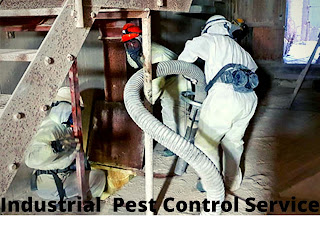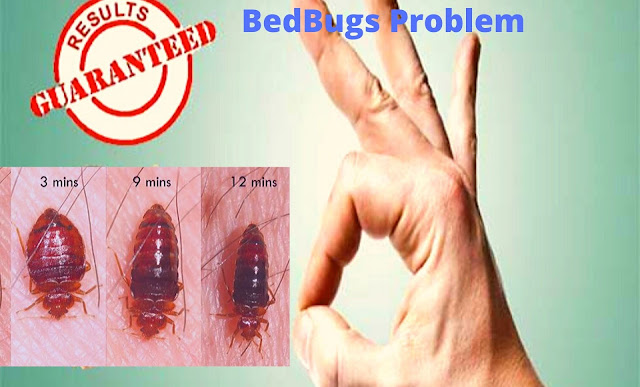Now you can fight rats yourself
If you have undergone pest control protection training, you can now apply online for permission to handle the Rodent Control Service in Dhaka at the Bangladesh Work Environment Authority. As a farmer, you now have the opportunity to fight rats yourself when you want to protect your farm.
Only a few pieces of information have been approved for use by persons with Class Pest control authorization. Among these agents is Rodent Control Paste, which is an anticoagulant ready-to-use bait. The paste is very attractive to rats and mice and works in both dry and humid environments.
• low risk of secondary poisoning
• contains the bitterness Bitrex to prevent accidental eating
• use in impact-proof pasture stations - indoors and outdoors around buildings
You can find labels, safety data sheets, and more up-to-date information.
Watch with bait - for everyone's best!
Using bait to monitor the presence of rats and mice is good for everyone - except for the pests. It is cheap, effective and minimizes the risk of children or other animals getting intoxicated.
Visiting pests such as rats or mice in a home or workplace is never welcomed. They sneak into the buildings unnoticed and before anyone discovers the first pest, the problem is often already quite extensive. By permanently monitoring the properties you suspect may be visited, you avoid having to deal with extensive problems and can minimize the impact on nature.
Having an uninterrupted guard with poison bites can be both expensive and cumbersome for the customer, not to mention the risks that other than just rats and mice do, ”explains Dr. Stefan Endepols, who works with product development at Bayer Professional. Then guarding with poison-free bait, like Bayer's Harmonix Monitoring Paste, is really the best option.
He explains that traps require that they be checked daily and that method is quite expensive. Constantly having poison bait laid out in places where one does not know if there are even pests only expose other animals to the risk of getting harmful substances.
By first placing poison-free baits, you get a clear picture of how extensive the problem is and how the rats and mice act in this particular building.
The bait consists of a form of a paste that is placed in what can most closely resemble a teabag. The bait is attractive to mice and rats, as it is both tasty and nutritious. The animals are attracted to the pasture site and gnaw on the pasture which then gets clear traces. This gives the pest control a good basis for assessing the opponent and the extent of the problem.
On the one hand, you get a good picture of where they prefer to eat, and on the other hand, a fluorescent substance in the pasta makes it possible to find out how they move in the house and where they have their resting place, explains Dr. Endepols. You do this by using a so-called blacklight in the dark which then causes the spill to glow blue.
With the information that the non-toxic bait has provided, you can now start the fight more effectively.
Whether you choose traps or poison, you can place these in places that you now know are trafficked by rats and mice. The advantage of choosing a poison in this position is that the pests have become accustomed to eating in specific places and rely on the availability of food there. Therefore, there is a great chance that they will continue to eat from the same places. The poisonous bait tastes and looks the same and is just as nutritious. Since the anticoagulant does not work in the mice and rats until after a few days, they then get a sufficient dose from one and the same place.
In some environments, such as food-producing factories, combating poison is not allowed. There, it is better to supplement the bait with traps after locating and analyzing the extent of the problem.
In these environments, non-toxic bait also serves as a way to prove to health authorities that there is no pest. If you leave the bait for a couple of weeks without being hired, it is acceptable proof that the plant is free of these problems.
Healthy environments
• Brown Rat
• Insurance
• Latin name: Rattus norvegicus
• Life cycle: Up to 1 year
Eggs: 4-7 cubs/litter
Size: 25 cm
In Bangladesh, there are two types of rats - Brown Eight which is the most common and Black Eight seen in some places in port areas.
Rats are often considered to be pests that are actively destroying humans. Rats live on waste, among other things, and can thus help to spread a lot of diseases that can affect humans and animals.
Rats are omnivorous, they eat both plants and animal foods. Unlike mice, which do well in completely dry places, the rat must have access to drinking water.
Rats climb and swim well, but its main tools are the large chisel-shaped front teeth that can bite into anything less hard than iron - only the teeth get hold.
• Contact Us
• Privacy Policy
House mouse
medi Latin name: Mus musculus
Lifecycle: Up to 1 year
Eggs: 3-15 cubs / litter
Size: 15-19 cm incl. tail The
the mouse is short-haired and the color varies from light brown to black. They are most active at night and do not like bright light.
They usually live in confined spaces, where there is food nearby. The estate is built of various soft materials that they can get hold of.
The male mice are predominantly living together with several females and their young. If two or more males are kept together in a cage, they become easily aggressive towards one another, especially if they have not grown up together.
The house mouse eats mainly vegetables but can also eat meat and milk products. They drink quite a bit of water in addition to what is in the food.
Only a few pieces of information have been approved for use by persons with Class Pest control authorization. Among these agents is Rodent Control Paste, which is an anticoagulant ready-to-use bait. The paste is very attractive to rats and mice and works in both dry and humid environments.
• low risk of secondary poisoning
• contains the bitterness Bitrex to prevent accidental eating
• use in impact-proof pasture stations - indoors and outdoors around buildings
You can find labels, safety data sheets, and more up-to-date information.
Watch with bait - for everyone's best!
Using bait to monitor the presence of rats and mice is good for everyone - except for the pests. It is cheap, effective and minimizes the risk of children or other animals getting intoxicated.
Visiting pests such as rats or mice in a home or workplace is never welcomed. They sneak into the buildings unnoticed and before anyone discovers the first pest, the problem is often already quite extensive. By permanently monitoring the properties you suspect may be visited, you avoid having to deal with extensive problems and can minimize the impact on nature.
Having an uninterrupted guard with poison bites can be both expensive and cumbersome for the customer, not to mention the risks that other than just rats and mice do, ”explains Dr. Stefan Endepols, who works with product development at Bayer Professional. Then guarding with poison-free bait, like Bayer's Harmonix Monitoring Paste, is really the best option.
He explains that traps require that they be checked daily and that method is quite expensive. Constantly having poison bait laid out in places where one does not know if there are even pests only expose other animals to the risk of getting harmful substances.
By first placing poison-free baits, you get a clear picture of how extensive the problem is and how the rats and mice act in this particular building.
The bait consists of a form of a paste that is placed in what can most closely resemble a teabag. The bait is attractive to mice and rats, as it is both tasty and nutritious. The animals are attracted to the pasture site and gnaw on the pasture which then gets clear traces. This gives the pest control a good basis for assessing the opponent and the extent of the problem.
On the one hand, you get a good picture of where they prefer to eat, and on the other hand, a fluorescent substance in the pasta makes it possible to find out how they move in the house and where they have their resting place, explains Dr. Endepols. You do this by using a so-called blacklight in the dark which then causes the spill to glow blue.
With the information that the non-toxic bait has provided, you can now start the fight more effectively.
Whether you choose traps or poison, you can place these in places that you now know are trafficked by rats and mice. The advantage of choosing a poison in this position is that the pests have become accustomed to eating in specific places and rely on the availability of food there. Therefore, there is a great chance that they will continue to eat from the same places. The poisonous bait tastes and looks the same and is just as nutritious. Since the anticoagulant does not work in the mice and rats until after a few days, they then get a sufficient dose from one and the same place.
In some environments, such as food-producing factories, combating poison is not allowed. There, it is better to supplement the bait with traps after locating and analyzing the extent of the problem.
In these environments, non-toxic bait also serves as a way to prove to health authorities that there is no pest. If you leave the bait for a couple of weeks without being hired, it is acceptable proof that the plant is free of these problems.
Healthy environments
• Brown Rat
• Insurance
• Latin name: Rattus norvegicus
• Life cycle: Up to 1 year
Eggs: 4-7 cubs/litter
Size: 25 cm
In Bangladesh, there are two types of rats - Brown Eight which is the most common and Black Eight seen in some places in port areas.
Rats are often considered to be pests that are actively destroying humans. Rats live on waste, among other things, and can thus help to spread a lot of diseases that can affect humans and animals.
Rats are omnivorous, they eat both plants and animal foods. Unlike mice, which do well in completely dry places, the rat must have access to drinking water.
Rats climb and swim well, but its main tools are the large chisel-shaped front teeth that can bite into anything less hard than iron - only the teeth get hold.
• Contact Us
• Privacy Policy
House mouse
medi Latin name: Mus musculus
Lifecycle: Up to 1 year
Eggs: 3-15 cubs / litter
Size: 15-19 cm incl. tail The
the mouse is short-haired and the color varies from light brown to black. They are most active at night and do not like bright light.
They usually live in confined spaces, where there is food nearby. The estate is built of various soft materials that they can get hold of.
The male mice are predominantly living together with several females and their young. If two or more males are kept together in a cage, they become easily aggressive towards one another, especially if they have not grown up together.
The house mouse eats mainly vegetables but can also eat meat and milk products. They drink quite a bit of water in addition to what is in the food.




Comments
Post a Comment